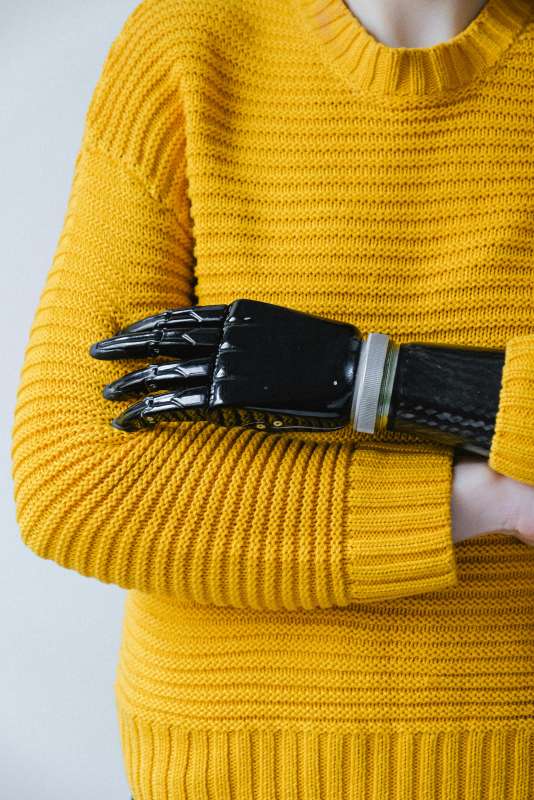Robotics in Medicine: Robots for Diagnosis and Treatment
Published on: May 19, 2025
Robotics in Medicine: Revolutionizing Diagnosis and Treatment
Robotics has emerged as one of the most transformative forces in modern medicine, providing innovative solutions for both diagnosis and treatment of a wide range of diseases. The integration of robotics into healthcare has led to advancements that were once considered science fiction, but are now a reality in hospitals and clinics worldwide. Medical robots offer unparalleled precision, efficiency, and consistency, dramatically improving patient outcomes and the quality of care. The use of robots in medicine encompasses a variety of systems, including diagnostic robots that assist in imaging and analysis, as well as therapeutic robots that perform or assist in surgical procedures and patient rehabilitation. These advancements are not only enhancing the capabilities of healthcare professionals, but also opening new avenues for minimally invasive procedures, personalized medicine, and remote patient care.
Diagnostic Robots: Enhancing Medical Imaging and Analysis
One of the most significant applications of robotics in medicine is in the field of diagnostics. Diagnostic robots are designed to assist healthcare professionals in identifying diseases with greater accuracy and speed. These systems often integrate advanced imaging technologies, artificial intelligence (AI), and robotics to provide high-resolution images and detailed analyses, which are crucial for early detection and effective treatment planning.
Medical imaging robots have become indispensable in radiology and other diagnostic specialties. For instance, robotic systems are used to automate the positioning of imaging devices, ensuring optimal angles and reducing the risk of human error. Robotic arms can manipulate ultrasound probes, MRI coils, or CT scanners with remarkable precision, resulting in clearer and more consistent images. Additionally, these robots can be programmed to perform repetitive tasks, such as scanning multiple patients in succession, thereby increasing the throughput and efficiency of diagnostic departments.
- Robotic MRI and CT systems: These robots assist in positioning patients and equipment for magnetic resonance imaging (MRI) and computed tomography (CT) scans. By automating these processes, the systems reduce scan times and improve image quality.
- Robotic ultrasound: Robots can control ultrasound probes with steady, repetitive motions, which is particularly beneficial in procedures like echocardiography or fetal imaging. This leads to more reliable results and less discomfort for patients.
- Automated biopsy robots: Some diagnostic robots are equipped to perform image-guided biopsies. By using robotic precision, these systems can target suspicious tissue with minimal invasiveness, reducing complications and improving diagnostic accuracy.
Artificial intelligence plays a crucial role in enhancing the capabilities of diagnostic robots. AI algorithms can analyze vast amounts of imaging data, identifying patterns and anomalies that might be missed by the human eye. For example, AI-powered robots are used in dermatology to analyze skin lesions for signs of melanoma, or in ophthalmology to detect diabetic retinopathy from retinal scans. These technologies are not intended to replace physicians, but rather to augment their expertise and enable earlier, more accurate diagnoses.
Robotic diagnostic systems are also being developed for laboratory medicine. Automated robots can process blood samples, perform complex assays, and deliver results more quickly than traditional manual methods. During the COVID-19 pandemic, robotic systems were deployed in laboratories around the world to increase testing capacity and reduce the risk of infection for laboratory workers. These robots can handle thousands of samples per day, ensuring rapid and reliable diagnostic testing on a large scale.
Therapeutic Robots: Precision in Surgery and Patient Care
Therapeutic robots represent another major frontier in medical robotics. These systems are designed to assist or perform therapeutic interventions, ranging from minimally invasive surgeries to physical rehabilitation. The most well-known example of a therapeutic robot is the da Vinci Surgical System, which has been used in millions of procedures worldwide.
The da Vinci robot allows surgeons to perform complex operations through tiny incisions, using robotic arms that translate the surgeon's hand movements into precise actions. The system provides a high-definition, 3D view of the surgical field, and its instruments have a greater range of motion than the human hand. This results in less tissue damage, reduced blood loss, faster recovery times, and lower risk of complications for patients.
Robotic surgery has expanded beyond general surgery to include specialties such as urology, gynecology, cardiothoracic surgery, and orthopedics. Robots are now used for prostatectomies, hysterectomies, heart valve repairs, and joint replacements, among many other procedures. In orthopedic surgery, robots assist in the precise placement of implants during hip and knee replacements, ensuring optimal alignment and longevity of the prosthesis.
- Robotic-assisted laparoscopic surgery: These systems enable surgeons to operate with enhanced dexterity and control, even in confined spaces within the body.
- Neurosurgical robots: Robots are used to guide instruments during delicate brain and spinal surgeries, where millimeter-level accuracy is essential to avoid damaging critical structures.
- Radiotherapy robots: In cancer treatment, robotic systems such as CyberKnife deliver highly focused beams of radiation to tumors, minimizing exposure to surrounding healthy tissue.
Beyond surgery, therapeutic robots are transforming patient care in rehabilitation and physical therapy. Robotic exoskeletons and assistive devices help patients regain mobility after strokes, spinal cord injuries, or orthopedic surgeries. These robots provide consistent, repetitive movements that are essential for effective rehabilitation, and can be tailored to each patient's needs. For example, the Lokomat robotic gait training system supports patients as they walk on a treadmill, allowing them to practice walking in a safe and controlled environment.
Telepresence robots are another innovative application in therapeutic care. These robots enable physicians to remotely interact with patients, conduct examinations, and even guide local staff through complex procedures. Telepresence robots have proven especially valuable in rural or underserved areas, where access to specialists may be limited. During the COVID-19 pandemic, telepresence robots allowed healthcare providers to care for isolated patients while minimizing the risk of infection.
Integration of Robotics with Artificial Intelligence and Data Analytics
The synergy between robotics, artificial intelligence, and data analytics is driving a new era of personalized and predictive medicine. Robotics provides the precision and consistency required for medical interventions, while AI and data analytics enable the interpretation of complex medical data and the customization of treatment plans.
AI-powered diagnostic robots can analyze images, laboratory results, and patient histories to identify disease patterns and recommend next steps. For example, IBM Watson Health has partnered with hospitals to develop AI-driven decision support tools that assist clinicians in diagnosing and treating cancer. These systems can review thousands of medical journals, clinical trials, and patient records to suggest evidence-based treatment options tailored to each patient.
In surgery, AI algorithms can assist robotic systems by providing real-time feedback and guidance. For instance, AI can help identify anatomical structures, predict potential complications, and suggest optimal surgical paths. This reduces the cognitive load on surgeons and enhances the safety and effectiveness of procedures.
Data analytics also plays a vital role in optimizing the performance of medical robots. By analyzing data from thousands of procedures, manufacturers and healthcare providers can identify best practices, monitor outcomes, and continuously improve robotic systems. Predictive analytics can help anticipate equipment maintenance needs, minimizing downtime and ensuring that robots are always ready for use.
Challenges and Ethical Considerations in Medical Robotics
While the benefits of robotics in medicine are substantial, their widespread adoption also raises important challenges and ethical considerations. One of the primary concerns is the high cost of acquiring and maintaining advanced robotic systems. These costs can be prohibitive for smaller hospitals and healthcare facilities, potentially exacerbating disparities in access to cutting-edge care.
Another challenge is ensuring the safety and reliability of medical robots. Although robotic systems undergo rigorous testing and certification, there is always a risk of technical malfunctions or software errors. Healthcare providers must be trained to recognize and respond to such issues, and robust protocols must be in place to ensure patient safety.
The integration of AI and robotics also raises questions about data privacy and security. Medical robots often collect and process sensitive patient information, making them potential targets for cyberattacks. Ensuring the confidentiality and integrity of patient data is paramount, and manufacturers must implement strong cybersecurity measures to protect against breaches.
Ethical considerations also arise regarding the role of robots in patient care. While robots can enhance the capabilities of healthcare professionals, they should not replace the human touch that is essential to compassionate care. It is important to strike a balance between technological innovation and maintaining the human elements of empathy, communication, and trust in medicine.
Future Directions and Innovations in Medical Robotics
The field of medical robotics is rapidly evolving, with new innovations on the horizon that promise to further transform healthcare. Researchers are developing next-generation robots with enhanced sensory capabilities, greater autonomy, and improved integration with other medical technologies.
Soft robotics is an emerging area that focuses on creating robots with flexible, bio-inspired materials. These robots can navigate complex anatomical structures more safely and effectively than traditional rigid robots. For example, soft robotic endoscopes can maneuver through the digestive tract with minimal discomfort for patients, while soft robotic grippers can handle delicate tissues during surgery.
Miniaturization is another key trend in medical robotics. Scientists are working on micro-robots that can be injected or swallowed, allowing them to perform diagnostic or therapeutic tasks inside the body. These micro-robots could deliver drugs directly to tumors, remove blood clots, or even repair damaged tissues at the cellular level.
Collaborative robots, or cobots, are designed to work alongside healthcare professionals, assisting with tasks such as medication delivery, patient lifting, and room sterilization. These robots can relieve staff of physically demanding or repetitive tasks, reducing the risk of injury and freeing up time for direct patient care.
Remote surgery, also known as telesurgery, is becoming increasingly feasible with advances in robotics and telecommunications. Surgeons can now operate on patients in different cities or even countries, using robotic systems controlled over high-speed internet connections. This technology has the potential to bring specialized care to remote or underserved areas, bridging gaps in access to medical expertise.
As medical robotics continues to advance, collaboration between engineers, clinicians, and policymakers will be essential to ensure that these technologies are safe, effective, and accessible to all. The promise of robotics in medicine lies not only in its technical capabilities, but also in its potential to improve patient outcomes, enhance the quality of care, and ultimately transform the practice of medicine itself.










